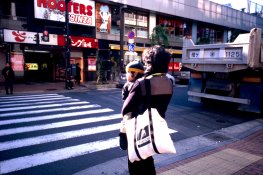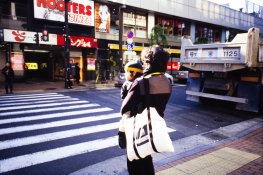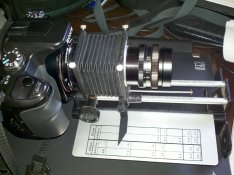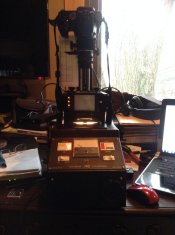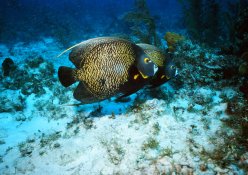Sure thing ... I'm going to type a really long answer, but the gist of it is that the answers to your questions depend on the ultimate destination of your photo: print or screen, and what size.
I shoot RAW. You need as much adjustment latitude as possible for the inversion of negatives, color correction of C-41, and digging into the shadows of slide film. Also if you need to do tonal adjustments, you'll want that latitude, too. I don't think any of my examples have any local tonal adjustments.
I don't calibrate against a target. I do adjust the white balance for the color temperature of my light table for slides. For C-41, I just go into the curves adjustment and directly manipulate the individual color curves, so I don't white balance those. I've had only moderate success doing my own C-41 conversion, so it's still a work in progress: the blue channel is especially low and tends to be noisy. For B&W, I don't need to WB --- I just pull the saturation control all the way down to -100.
What kind of film are you going to be scanning? I can probably offer a couple of extra tips and tricks for B&W and C-41.
Right now, I use the default Lightroom sharpening for my camera when doing RAW conversion. Input sharpening (which is what this is) should be determined by the antialiasing filter of your camera's sensor, because it's used to compensate for the softening caused by the camera sensor's AA filter. For cameras like the D800E and Olympus OM-D E-M1, which have no antialiasing filter, no input sharpening should be needed. The 5N has a moderately weak AA, from what I've read, so it shouldn't require much sharpening.
For output sharpening, that depends on your output medium. Print will require a different level of sharpening than a screen display, and for print, it depends on the kind of paper you're using, too. It also depends on the amount of fine detail and the look of the photo you're after. For example, a photo with big expanses of color with very little detail doesn't really need much sharpening and can enlarge a lot more easily, but a wide shot of a forest with lots of little details may need more sharpening and be more challenging to print at larger sizes.
I think for web-viewing sizes (basically 1500 pixels on the short side or smaller on Flickr or Facebook), it doesn't really matter.
I tend to err on the less is more side --- use as little sharpening as you can get away with. One of the pictures I had printed recently as a 12x18 was scanned on the Noritsu, which tends to oversharpen everything. I thought that printing it on matte paper with a slightly fibrous texture would basically cancel out the sharpening. Wow, was I wrong! Viewed from less than a foot away (I know, not realistic!), the print had all sorts of weird color artifacts from the sharpening. B&W in this respect is a bit more forgiving, and I've had printed some really nice B&Ws at 18x18 that are really beautiful with minimal grain and other artifacts. But pixel quality is really, really important for print --- another reason to shoot in RAW. Resolution is not.





